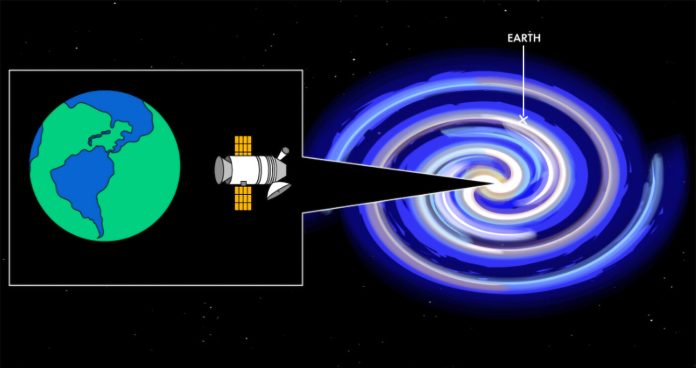
A team of scientists led by Dr. Sofia Sheikh from the SETI Institute has investigated a fascinating question:
If there were an alien civilization with technology similar to ours, would they be able to detect Earth?
If so, how far away could they be and what signals would they pick up?
Using computer models, researchers studied different kinds of signals—called technosignatures—that Earth produces.
This is the first time multiple technosignatures have been analyzed together, rather than separately.
The results show that the most detectable signals from Earth are radio waves, particularly from planetary radar emissions, like those from the former Arecibo Observatory.
These signals could potentially be detected from as far as 12,000 light-years away.
Another type of signal, atmospheric technosignatures, includes gases like nitrogen dioxide, which can indicate industrial activity.
Thanks to advanced telescopes such as the James Webb Space Telescope and the upcoming Habitable Worlds Observatory (HWO), scientists believe these emissions could be spotted up to 5.7 light-years away—just beyond Proxima Centauri, the closest star to the Sun.
As a hypothetical alien civilization gets closer to Earth, they would detect even more signs of our technology.
These could include city lights, satellite signals, heat islands, and even laser beams used for communication or scientific research. Together, these signals create a picture of a planet that is home to an advanced civilization.
“Our goal was to take a step back and think about what Earth looks like from space with today’s technology,” said Macy Huston, a co-author of the study and researcher at the University of California, Berkeley. “Understanding what our planet gives off helps put the search for alien life into perspective.”
SETI (Search for Extraterrestrial Intelligence) scientists hunt for alien civilizations by looking for unnatural signals—patterns in space that could indicate intelligent life.
They mainly use radio telescopes, but also scan for short bursts of light from lasers that could signal communication or spacecraft propulsion.
Another method involves studying exoplanet atmospheres for unusual gases that might suggest industrial pollution or other signs of technology.
While this study focused on signals we produce today, future research could explore even more advanced possibilities, like Dyson spheres, hypothetical giant structures that capture energy from stars.
“This research is like a mirror,” said Dr. Sheikh. “It makes us think—if we saw a planet with high levels of pollution, what would we assume? Could it mean intelligent life?”
This study helps scientists refine their approach to searching for extraterrestrial life. As telescopes improve and Earth’s own technology changes, repeating this type of research could offer new insights into how aliens—if they exist—might detect us.
Source: SETI Institute.



